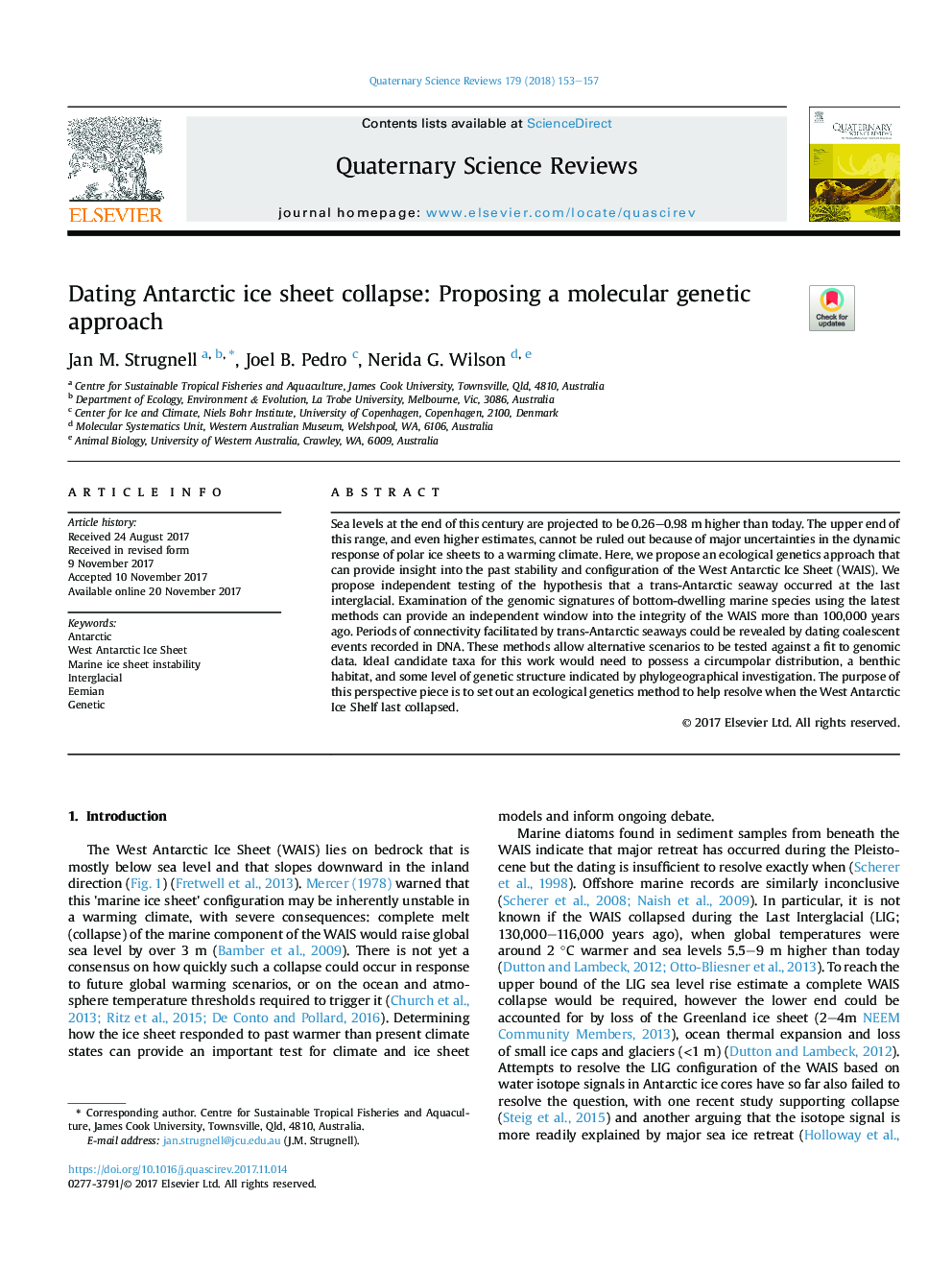| Article ID | Journal | Published Year | Pages | File Type |
|---|---|---|---|---|
| 8915055 | Quaternary Science Reviews | 2018 | 5 Pages |
Abstract
Sea levels at the end of this century are projected to be 0.26-0.98Â m higher than today. The upper end of this range, and even higher estimates, cannot be ruled out because of major uncertainties in the dynamic response of polar ice sheets to a warming climate. Here, we propose an ecological genetics approach that can provide insight into the past stability and configuration of the West Antarctic Ice Sheet (WAIS). We propose independent testing of the hypothesis that a trans-Antarctic seaway occurred at the last interglacial. Examination of the genomic signatures of bottom-dwelling marine species using the latest methods can provide an independent window into the integrity of the WAIS more than 100,000 years ago. Periods of connectivity facilitated by trans-Antarctic seaways could be revealed by dating coalescent events recorded in DNA. These methods allow alternative scenarios to be tested against a fit to genomic data. Ideal candidate taxa for this work would need to possess a circumpolar distribution, a benthic habitat, and some level of genetic structure indicated by phylogeographical investigation. The purpose of this perspective piece is to set out an ecological genetics method to help resolve when the West Antarctic Ice Shelf last collapsed.
Related Topics
Physical Sciences and Engineering
Earth and Planetary Sciences
Geology
Authors
Jan M. Strugnell, Joel B. Pedro, Nerida G. Wilson,
